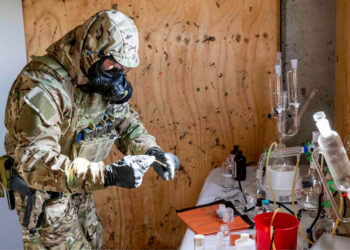A new report released on 1st September shines a light on the positive experience of former Defence Force members in rejoining civilian life and their positive impact on their communities.
The report finds that after leaving service, most veterans have a smooth transition to new employment and civilian life; but it also reminds us that this is not the case for everyone.
Minister for Veteran’s Affairs Matt Keogh welcomed the release of the Australian Institute of Health and Welfare’s Understanding the wellbeing characteristics of ex-serving ADF members.
“This is the first report of its kind that provides such detailed analysis of data on employment status, income, educational qualifications, home ownership and family and household makeup of ex-ADF members,” Minister Keogh said.
“This will help us understand how we can best tailor our services and programs to suit the needs of veterans and families.”
The report used data from the 2016 Census and examined experiences from 72,700 veterans who had at least one day of service on or after January 2001 and had transitioned from the ADF as at 31 December 2015.
The report shows nearly 2 in 5 (38 per cent) ex-serving ADF females had a bachelor’s degree or higher, a rate 1.4 times higher than Australian females (26 per cent). One quarter (25 per cent) of ex-serving ADF males had a bachelor’s degree or higher, which is similar to Australian males (22 per cent).
“Educational qualifications can be indicators of how well ex-serving ADF are able to transition into civilian life,” Minister Keogh said.
“There’s no doubt that returning to civilian life after Defence service is a challenge, and we must ensure the best supports and services are made available to transitioning personnel, including in relation to employment, health and wellbeing, submitting compensation claims and rehabilitation to deliver a smooth landing for veterans and families.”
The report shows that 78 per cent of ex-serving males and 76 per cent of ex-serving females were employed in 2016, compared with 67 per cent of Australian males and 57 per cent of Australian females across the general population were employed at that time.
Data also showed ex-serving ADF generally had weekly personal higher incomes in comparison to the broader Australian population. 76 per cent of ex-serving males and 60 per cent of ex-serving females earned a weekly personal income of $800 and above in 2016. By comparison, around half of Australian males (52 per cent) and just over one third of Australian females (34 per cent) earned a weekly personal income of $800 and above.
In relation to veteran families, more veteran families have children under 15 years old (74 per cent) compared with the Australian population (62 per cent). The median age of these children was six and a half years old. This is likely due to the higher proportion of persons aged between 25 and 44 represented in the ex-serving population.
“This helps us better understand what veteran families are juggling and what information and support they might need to help them navigate life with young children,” Minister Keogh said.
The report showed the majority of veterans owned their own home, on par with the Australian population.
“Housing plays a major role in people’s health and wellbeing, by providing shelter, safety and security,” Minister Keogh said.
“We understand that a person’s housing needs and preferences change as they progress through different stages of their lives, and it is important to provide adequate funding for services that support our veterans.
“We are committed to investing in research that delivers a better understanding of the veteran community, so that we can provide the services that veterans and families need, and having access to the latest data helps us to do that.
“I look forward to next year’s update of this report, which will contain data from the 2021 Census.”
There are many positive findings in this report. However some individuals and cohorts experience challenges, including those members who transitioned from the ADF involuntarily for medical reasons and those who served fewer years. This report helps government target its work in these areas to where the higher needs are.
If you or someone you know is having a difficult time, help is available. All current and former ADF personnel and their families have access to free and confidential counselling and support through Open Arms — Veterans & Families Counselling. This life-saving support is available 24 hours a day, seven days a week by calling 1800 011 046.
The report was produced as part of an ongoing partnership between the Australian Government’s Department of Veterans’ Affairs and the Australian Institute of Health and Welfare.
For more information or to download a copy of the report, visit: www.aihw.gov.au













